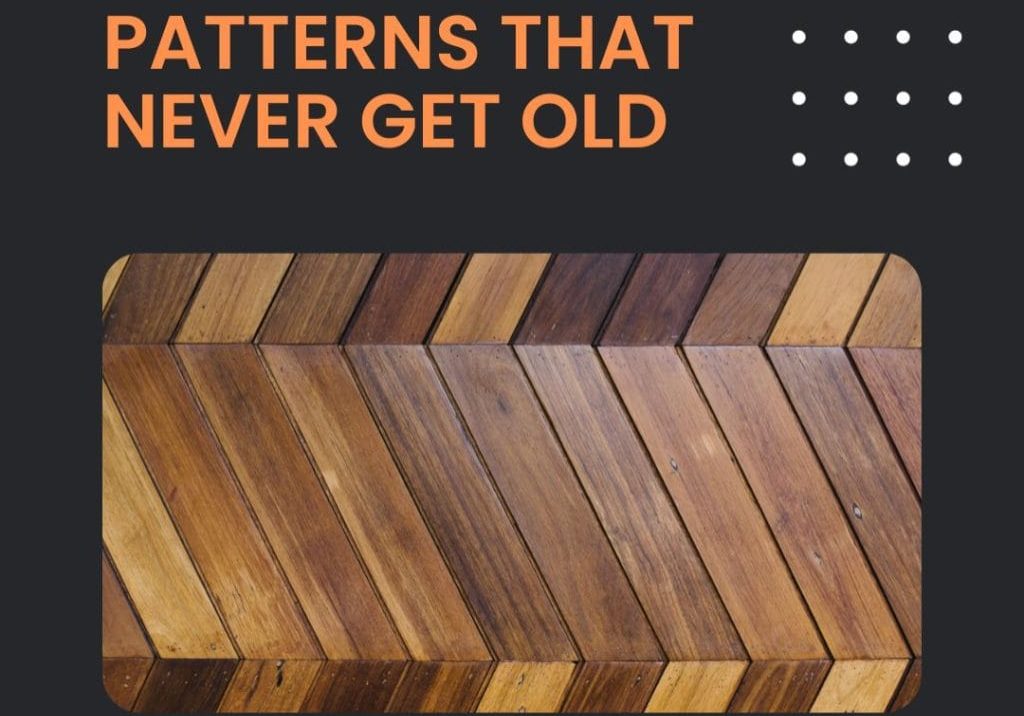Hickory flooring is renowned for its durability and distinctive character. However, you may consider staining hickory floors to ensure they truly complement your workspace aesthetics. This guide, “How to Stain Hickory Flooring – Tips & Tools,” is designed as a comprehensive resource for small to medium business owners looking to undertake this task. We will share essential tips, techniques, and tool recommendations, whether you are planning a DIY project or seeking a deeper understanding when hiring professionals.
Preparation for Staining
Preparation is key to staining hickory floors. Clean, sand, and remove dust to get a smooth, even finish that brings out the wood’s natural beauty.
Importance of a Clean, Sanded Surface
A clean, sanded surface is fundamental for achieving optimal staining results. Sanding removes surface imperfections and opens the wood grain, allowing the stain to penetrate evenly. A thoroughly cleaned and sanded surface ensures a smooth, even finish, enhancing the natural beauty of your hickory floor.
Guide on Sanding Floor
To remove the old finish and surface imperfections, begin sanding the hickory floor using a drum sander and coarser grit sandpaper, like 40-grit.
Gradually switch to a finer grit sandpaper, such as 80-grit and 120-grit, to smooth the surface.
Finish the process with the finest grit sandpaper, typically 220 grit, to achieve a perfectly smooth surface ready for staining.
Choosing the Right Sandpaper Grit
Selecting the correct sandpaper grit is vital for a successful staining job. Coarse grit, like 40-grit, effectively removes old finishes and surface imperfections, while finer grits, such as 80 to 220, smooth the surface. The final choice of grit should be based on the specific condition and type of your hickory floor.
Choosing Your Stain
Staining hickory floors is important for appearance and maintenance. The stain you choose affects color, grain patterns, and overall look. Here are some tips to help you choose the right stain.
Types of Stains Suitable for Hickory
Hickory responds well to both oil-based and water-based stains. Oil-based stains penetrate deeper, enhancing the wood’s natural appearance and grain pattern. Water-based stains, on the other hand, dry faster and offer easier cleanup, although they may raise the grain slightly. Your choice should consider the desired aesthetic and practical factors like drying time and cleanup.
Selecting the Right Stain Color
When choosing a stain color for your hickory floor, consider the room’s overall design and the desired ambiance. Darker stains bring elegance and formality, while lighter stains create a casual, airy feel. Always test a small area first to see how the stain color interacts with your wood’s natural grain and tones.
Impact of Stain Color on the Appearance of Grain
The color of your stain can profoundly influence the visibility of the hickory’s grain. Lighter stains often retain and enhance the natural grain patterns, showcasing the wood’s inherent beauty. Conversely, darker stains may subdue the grain, giving your hickory flooring a sleek and uniform appearance.
How to Test Stains Before Full Application
Before committing to a full application, testing your chosen stain is essential. Start by applying a small amount of stain to a rarely seen section of the floor or a scrap piece of hickory. Allow it to dry completely, then observe how the color and finish complement your flooring’s natural grain and the overall room aesthetic.
Application of Stain
To apply the stain to your hickory floor, use a paintbrush or cloth to spread the stain, following the direction of the wood grain. Allow the stain to penetrate the wood – the longer it sits, the deeper the color will be. Once the desired depth of color, remove any excess stain with a clean cloth before it dries.
Techniques for Even Application and Avoiding Blotches
To achieve an even stain application and avoid blotches on your hickory floors, it’s crucial to master a few key techniques.
- Consistent Strokes: Maintain uniform strokes that follow the wood grain to ensure even application.
- Work in Sections: Tackle small, manageable floor sections at a time to maintain control over the stain application.
- Use a High-Quality Applicator: Invest in a high-quality brush or cloth to achieve a smoother finish.
- Wipe Off Excess: Wipe off excess stains promptly to prevent scars and dark spots.
- Multiple Thin Coats: Apply multiple thin layers rather than one thick coat for a more consistent, blotch-free finish.
Tools Needed for the Application Process
Some right tools can streamline the staining process and ensure a clean, professional finish on your hickory floors the follows:
- Stirring Stick: A tool to gently mix the stain before putting it on.
- High-Quality Brush/Applicator: To spread the stain evenly on your hickory floor.
- Lint-Free Cloths: Used for putting on the stain and wiping off extra.
- Paint Tray: Holds the stain while you’re putting it on.
- Protective Gloves: Keep your hands clean and safe from the stain.
- Safety Goggles: Protect your eyes from any splatters.
- Knee Pads: For comfort while putting on the stain, especially on your knees.
Finishing Touches
After successful staining, the final step involves applying a protective topcoat to seal your hickory floors and enhance their durability and beauty.
Role of Wood Conditioners
Wood conditioners play a crucial role in preparing your hickory floors for staining. They act as a pre-staining step, penetrating the wood to even out the absorption of the stain. This results in a uniform, blotch-free finish, ensuring your stain highlights the natural beauty of the hickory flooring.
Apply Polyurethane for a Durable Finish
Use polyurethane to make your hickory floors strong and last a long time. Stir it gently; don’t shake it to avoid bubbles. Use a good brush to put it on smoothly with the wood grain. Let each layer dry completely before adding the next one, and sand a little between coats for a smooth finish.
Sanding Between Coats for a Smooth Finish
Sand between coats of polyurethane on your hickory floor for a smooth finish. Use a fine sandpaper (220-grit is good) to gently sand the floor, making it nice for more coats. After sanding, wipe away the dust with a damp cloth before putting on the next coat.
Maintenance and Care
Maintaining your hickory floor entails regular cleaning to remove dust and dirt, promptly addressing spills to prevent stains, and using furniture pads to minimize scratches. Annual sealing helps preserve the stain and wood; periodic professional deep cleaning can restore the floor’s luster. Always follow the manufacturer’s instructions for specific care guidelines.
Cleaning Products and Techniques
Use cleaners made for wood floors to keep your hickory floor looking nice. Don’t use strong chemicals; they can harm the finish. Choose mild soaps or pH-neutral cleaners. Clean with a slightly damp mop or a soft cloth to avoid water damage. Use a gentle broom or a vacuum with a hardwood setting for dust and dirt.
Troubleshooting Common Issues
Coloring hickory floors might have a few challenges. Let’s explore common issues you may encounter and provide solutions to ensure your hickory floors look as stunning as intended.
How to Deal with Uneven Staining
To fix uneven stains on hickory floors, gently sand the rough spots. Follow the wood’s lines while sanding. Wipe away the dust and put on a thin layer of stain. Quickly wipe off any extra stain. Apply the stain evenly in small sections using smooth strokes for a consistent finish.
Addressing Color Mismatches
Variations in wood grain or inconsistencies in stain application can lead to color mismatches in stained hickory floors. Consider using a tinted polyurethane finish or a color-adjusting stain to address this issue. Apply these solutions in small, controlled patches and blend the new color with the existing stain for a seamless finish. Doing so can achieve a more uniform and aesthetically pleasing appearance for your hickory floors.
Safe Disposal of Staining Materials
After treating hickory floors, it’s important not to dispose of used brushes, rags, or stain cans in regular trash. Instead, familiarize yourself with the local regulations for disposing of hazardous waste, as many areas have designated facilities. If you have used oil-based stain, ensure the rags are thoroughly dried in a well-ventilated area before discarding them, as they can pose a fire hazard. Always prioritize safety when handling and disposing of these materials.
Conclusion
Staining hickory floors can make them look great and are budget-friendly. We covered the tools needed, using wood conditioners, applying durable polyurethane, and sanding between coats. We also discussed keeping your staining hickory floor in good shape and fixing common problems. Whether you do it yourself or get help, the info you learned is valuable. A nicely stained hickory floor looks awesome and adds value to your place.










